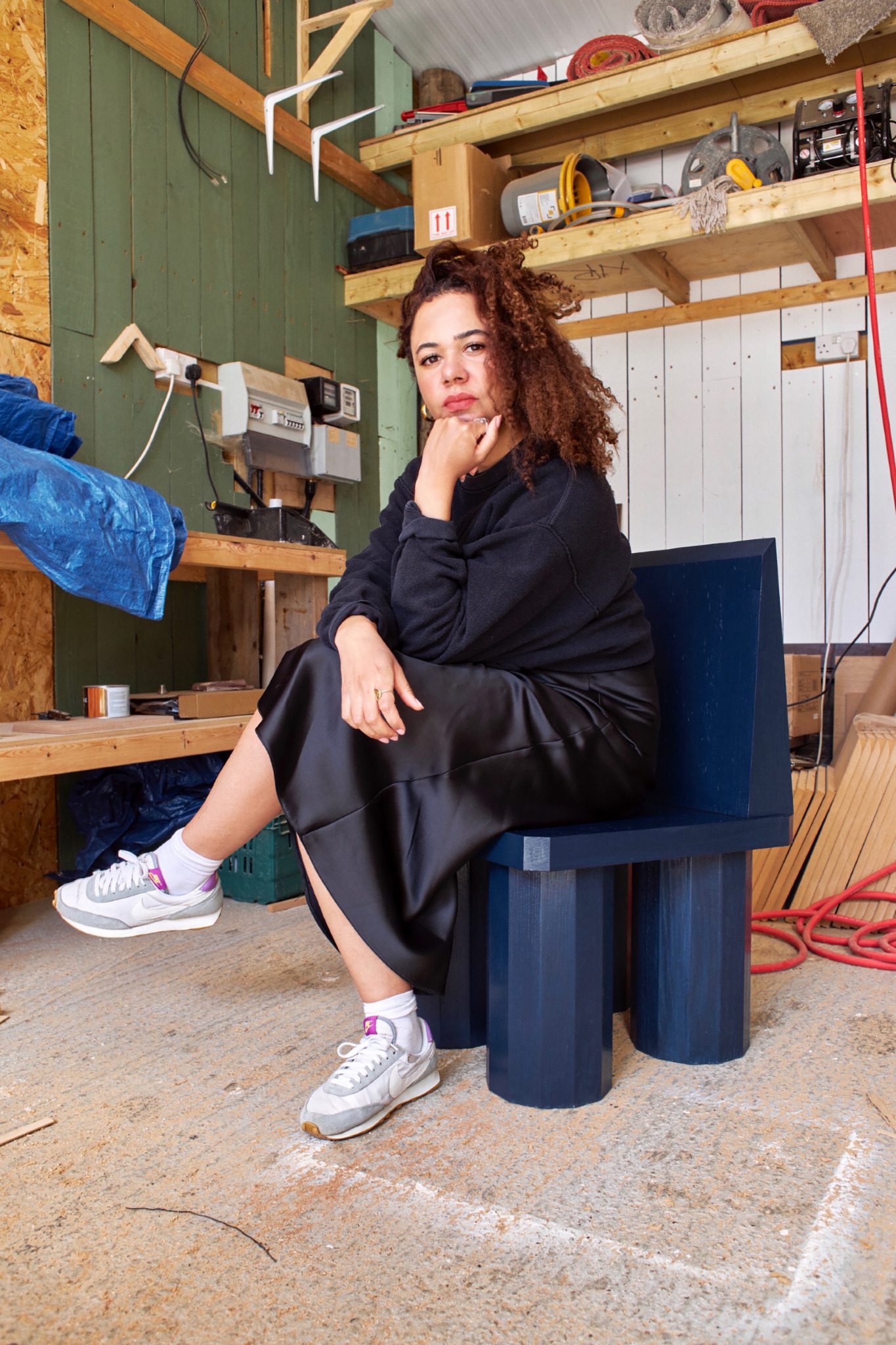
Dharma Taylor in studio . Image courtesy of Dudley Waltzer, 2023.
‘Part of The Furniture’ Stuart Hall Artist Residency
Pausing half-way through her artist residency at Stuart Hall Library, Dharma Taylor shares with us a collection of her notes, which she describes as being ‘all over the place, but honest insights into the way this research has organically developed’. Through her writing, she is finding connections between text as a starting point, inspiration directly from the design world and then ultimately, the physical realisation of her work.

Dharma Taylor – Lightbeam (Photo by Dan Weill).
“Just relax into it and let one publication lead to another.”
The above quote came as reassurance from artist and designer Mac Collins after speaking to him on the phone from what sounded like his studio in Nottingham just before he showcased a new large-scale body of work at the British Pavilion for Venice Biennale 2023 titled ‘Dancing Before The Moon’ and just after he presented a new chair in Ronan Mckenzie’s group show ‘To Be Held’ in Margate.
I reached out to Mac as part of my research as the sixth artist in residence at the Stuart Hall Library. Mac and I have supported each other’s furniture narratives for the past few seasons, and I’ve always respected and related to him as a designer who works with wood as a material.
First on my reading list, I was drawn to a lovely little publication by Pricegore and Yinka Illori called Dulwich Pavilion. Reading about Yinka’s collaboration with Pricegore and how it was a last-minute collaboration ‘made on the Friday before the Monday pitch deadline, fusing European and West African cultural traditions to make a Pavilion that might resonate with the diverse communities of South London and beyond.’ Dingle Price and Alex Gore go on to mention how afternoons were spent sharing ideas and memories; and how as images accumulated in their imagination / mind’s-eye they noticed commonalities between lifestyles and buildings that had previously seemed so different.
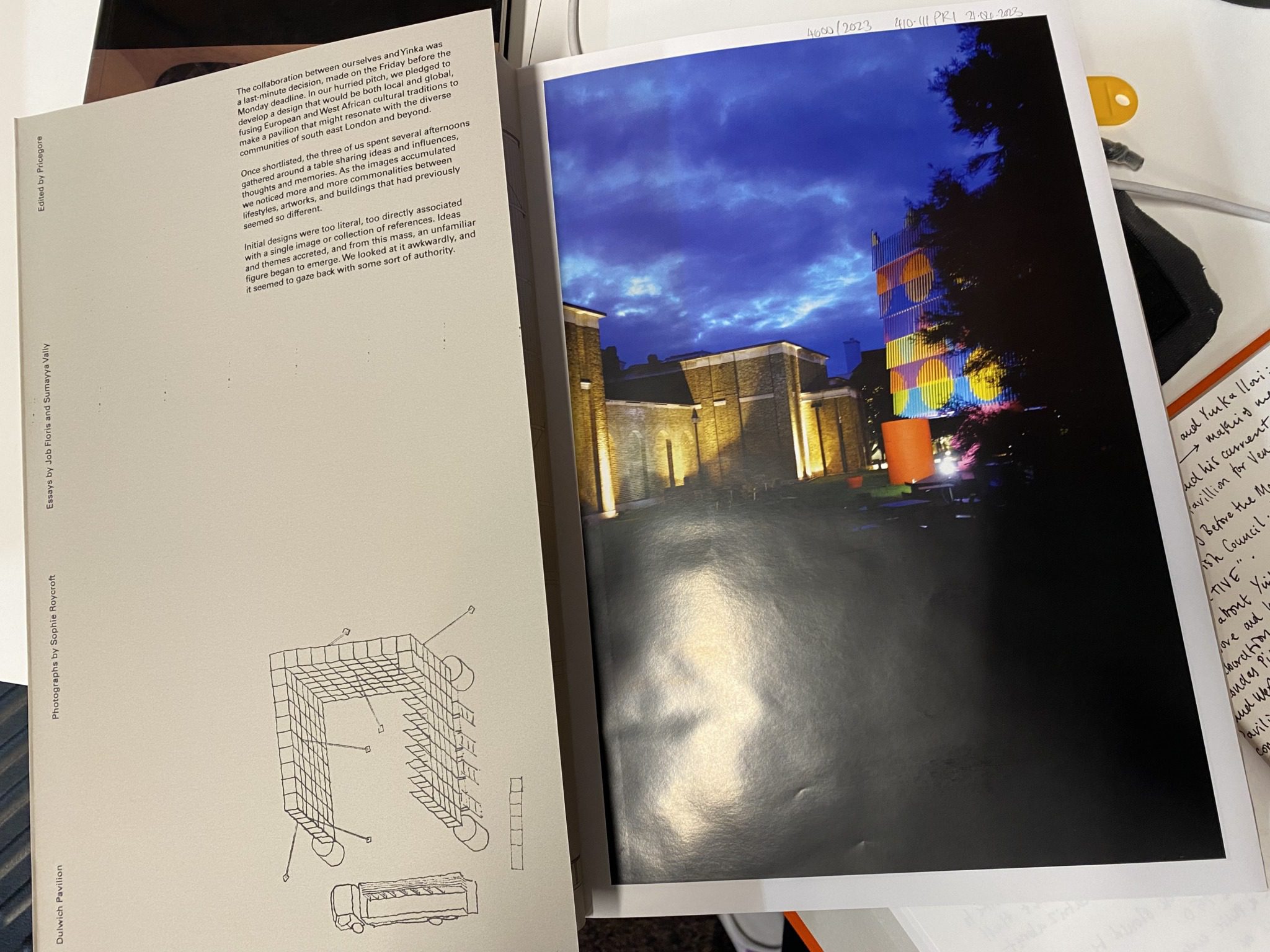
Pricegore – Dulwich Pavilion.
This reminds me of the woven textile piece I created for Paul Smith titled Lightbeam and the subsequent wooden structures that arose from this piece. Lightbeam comes from a childhood memory of living in South London, Greenwich, using colour and hue as a language that many seem to resonate with.
Reading the beautiful descriptions in Dulwich Pavilion of the colour and contrasting hues in the structure, akin to coloured paper-thin Rizla. The work described here makes me think of artist Adam Nathaniel Furman and the full-scale tests he did for a polychromatic work for Paddington Central. There is a similarity in the ways all these artists use colour and blend culture.
This part in my research and direction resonates more exclusively with Yinka’s The Colour Palace and the importance of community, and the footnotes of Peckham being ‘Little Lagos’.
Speaking to Mac Collins about his recent group exhibit and his sand cast aluminium brass and Douglas fir chair titled Collective Instinct. His explorative inspiration behind this chair was engineering and instinct that bind or bond individuals within a community. Currently on show in Margate. Cast in aluminium and back hurtlingly heavy this piece feels permanent!
Reading the words of Job Floris talking about the Pavilion being temporary – This residency “Part of The Furniture” feels like I want to create something more permanent; whether that be a textile or a chair to relax into.
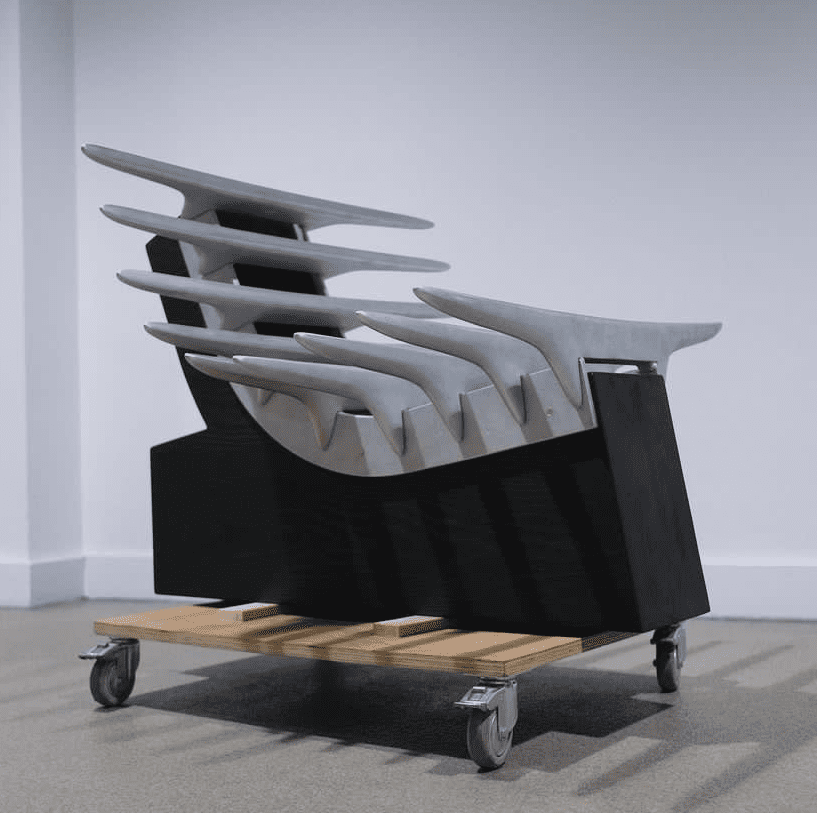
Mac Collins – Collective Instinct.
Looking into iniva archival pieces such as Tangled Yarns exploring politics of the textile supply chain through time discussed by Alke Schmidt. I think perhaps researching this paper is more of a metaphor for the tangled discourse or an unravelling of concepts and ideas on this research journey. Also thinking about how I can link future textile work of my own with elements of this library research. This archive piece, both written and audio, asks questions about issues of race and gender exploitation and violence.
– This creates a side shoot of research into the socio-economic impacts of the textile industry past and present.
Reading Maria Amidu’s Toast, which is beautiful, and in it she mentions how Stuart Hall has taught her so much and made her feel a sense of place. This idea of ‘a sense of place’ is the essence of this project. A sense of place, a place in time, constituting an archive, a living archive, to become permanent and necessary like part of the furniture.
I’m also reading The Journal of Dress found within the shelves of iniva and I want to think about how can I link this stylistic approach into woodwork, linking these elements together that come naturally to my multidisciplinary way of working.
Further links and research findings – making links with books within the library and practitioners outside:
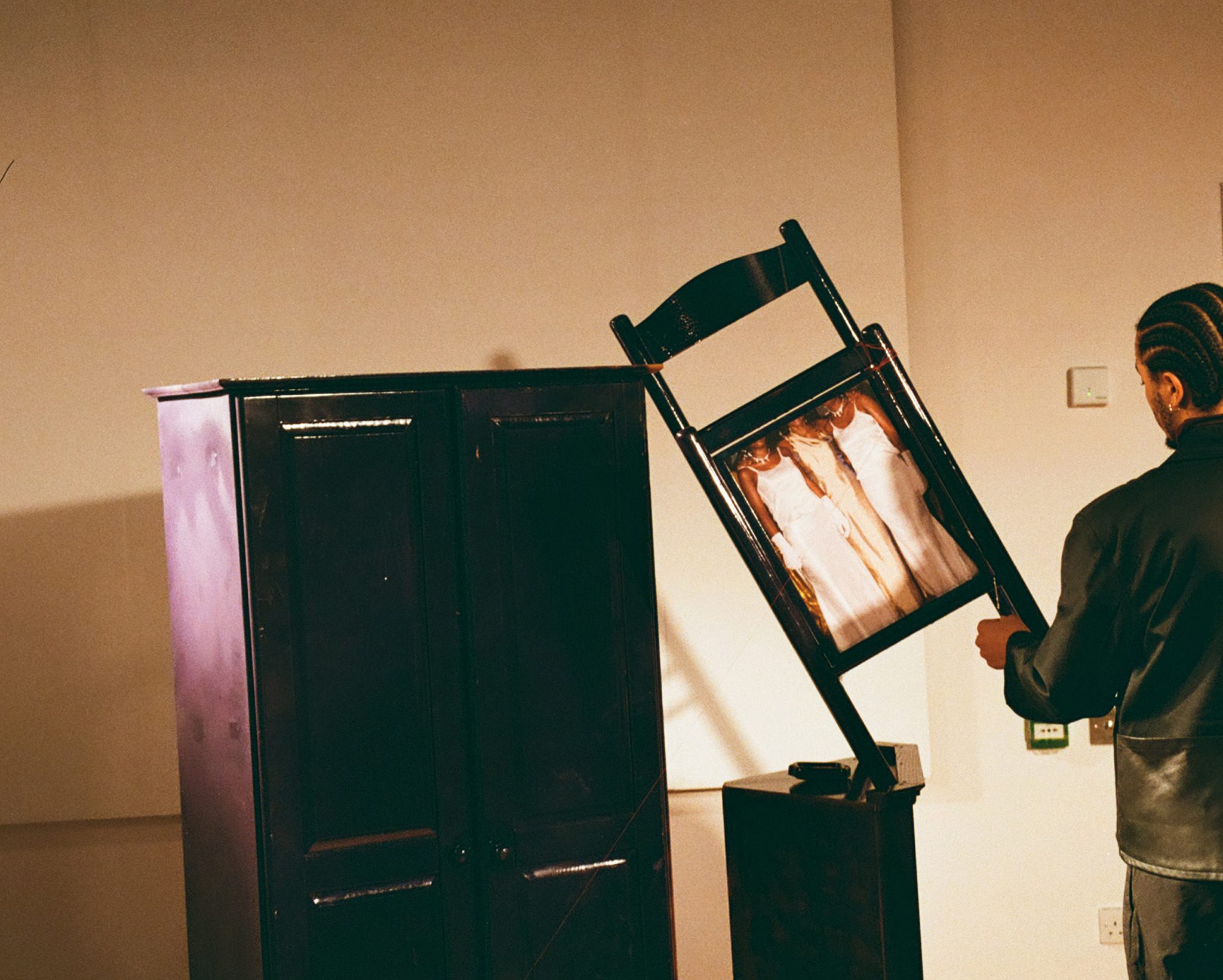
Henrique J Paris – Mem| ora| bilia.
Taking the opening quote to this research literally and letting one publication lead to another within the Stuart Hall Library I found Veerle Poupeye exploring Caribbean Art, looking at Edna Manley and Wilfredo Lam: The Chair 1943.
According to Lam the chair has an association with the divine – I’m currently unclear how this would be, however I do recognise a link to the chair being ‘a support for the human form throughout life’. Giving us the sense of a person or persons that once sat and existed in this structure.
Following from a conversation I had with artist Henrique J Paris as part of my artist residency with the Stuart Hall Foundation and iniva we spoke about body movement, home, social processes, objects holding information (rings, beads etc as a LIVING ARCHIVE). We asked each other questions like; ‘what is an archive?’ and thought about ideas of ‘styling the home’. In his work exhibits: Mem|ora|bilia and Tactility: Ethics of Cultural Heritage and Land he uses furniture and archive images of his own family photo history to ask explore gestures and social processes evoked through materiality.
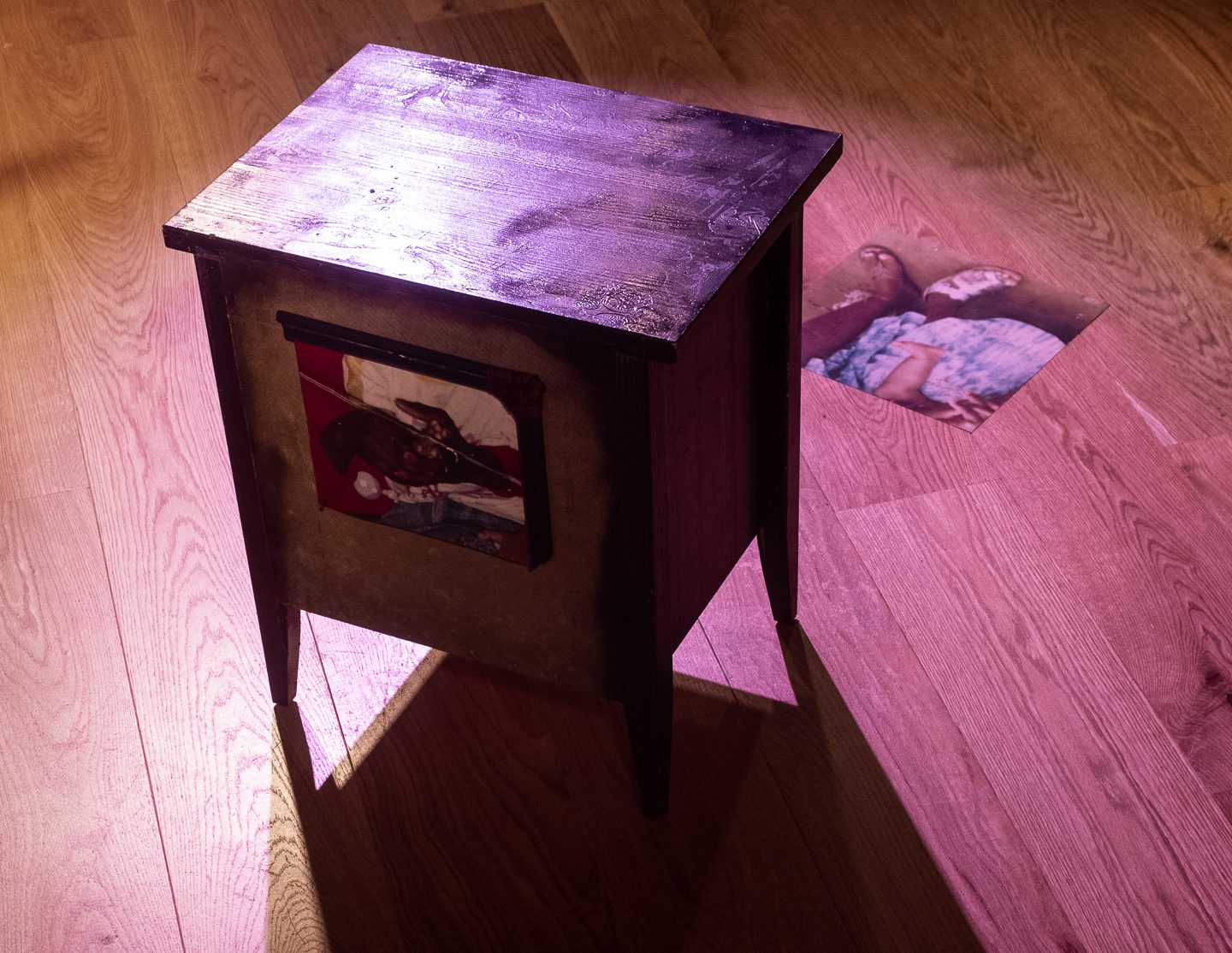
Henrique J Paris – Mem| ora| bilia.
I discovered Henrique’s work through friend Darryl Daley and his exhibition What You See Here / What you Hear Here at the Now Gallery. After speaking and sharing ideas with Henrique we found a similar discourse between objects and history and feeling. He subtitles this part in our conversation “Feelings that materials speak”. I love the idea of objects holding information, particularly beads and rings, and if these objects become living in some way, which links to the concept of a living archive. This makes me think… without these objects would we still be able to pinpoint memory? Going back to Stuart Hall’s Constituting An Archive, Third Text paper (2001) and a quote within that “The moment of the archive represents the end of a certain kind of creative innocence and the beginning of a new stage of self-consciousness, of self-reflexivity in an artistic movement…The whole apparatus of a history, key figures, and works, tendencies, shifts, breaks, ruptures, slips into place silently.”
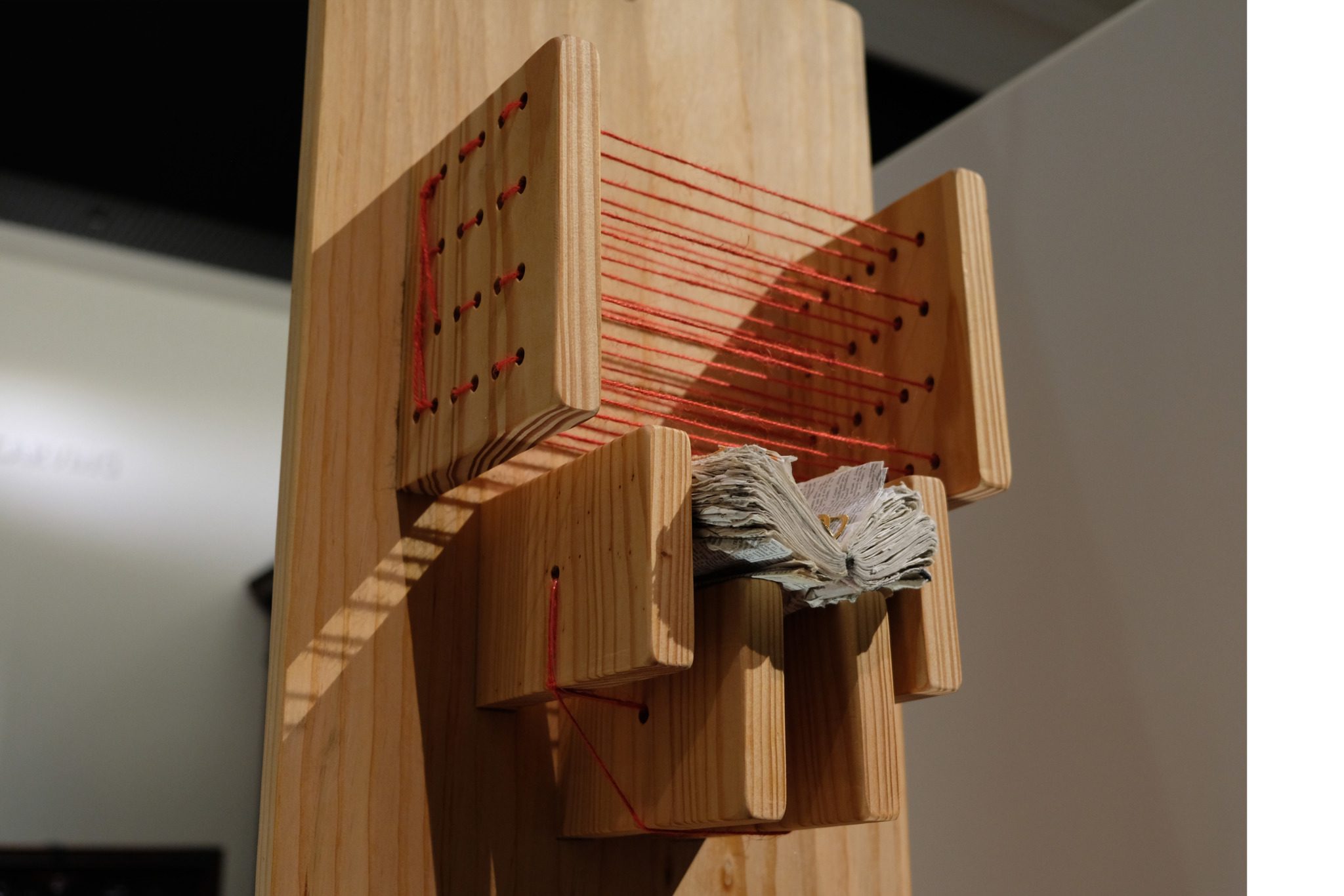
Henrique J Paris – Tactility: Ethics of Cultural Heritage and Land.
Henrique investigates concerns around both memory and imagination: accounting social and cultural processes. In Henrique’s Mem|ora|bilia (2021) he interprets images and found objects that tell collective histories. Whereas in Tactility: Ethics of Cultural Heritage and Land (2022) he questions Eurocentric presumptions of what archives are, mean and how they should look.
This led me to the archive News Release piece titled The West Indian Front Room, Memories and impressions of Black British Homes focusing on an installation by Michael McMillan drawing from childhood memories of his parents’ home. “His rich recollection of being a young boy in his parents front room describes some of these objects and evokes the textures, smells and sounds of that East London home: Sunshine beams through pressed lace curtains onto the colourful patterned carpet” The links within this news release snippet relate to my textile work Lightbeam and I’m excited to see how my research further develops into the creation of new work relating to other artists and practitioners alike.
Biography
Artist and maker Dharma Taylor is the sixth Stuart Hall Library Artist Residency – a funded research opportunity initiated by iniva and Stuart Hall Foundation. The residency takes place at Stuart Hall Library, and builds on Professor Stuart Hall’s unique contribution to intellectual and cultural life.
All images provided courtesy of their respective artists: Pricegore – Dulwich Pavilion. Dharma Taylor – Lightbeam (Photo by Dan Weill). Mac Collins – Collective Instinct. Henrique J Paris – Mem| ora| bilia. Henrique J Paris – Mem| ora| bilia. Henrique J Paris – Tactility: Ethics of Cultural Heritage and Land.